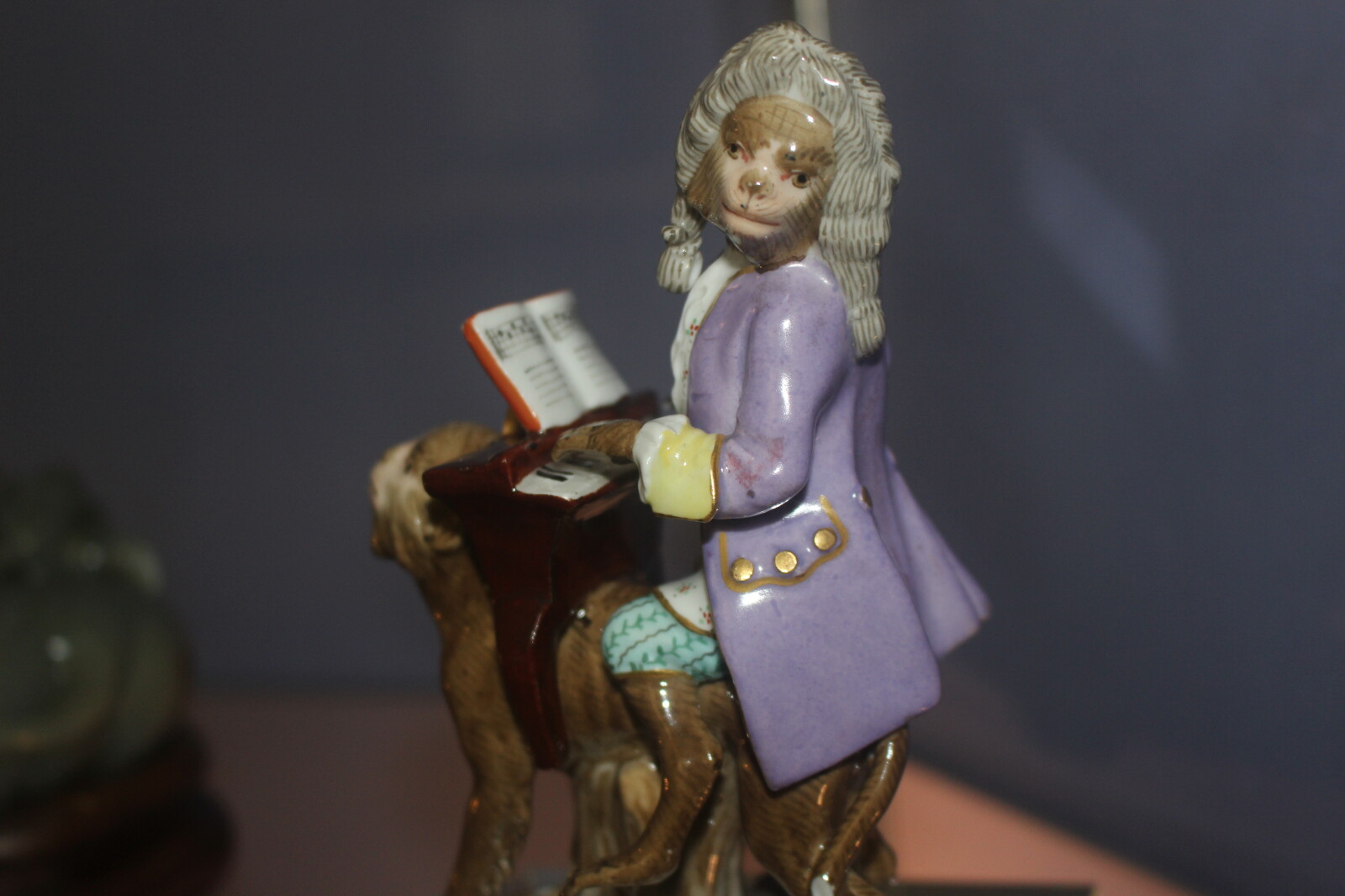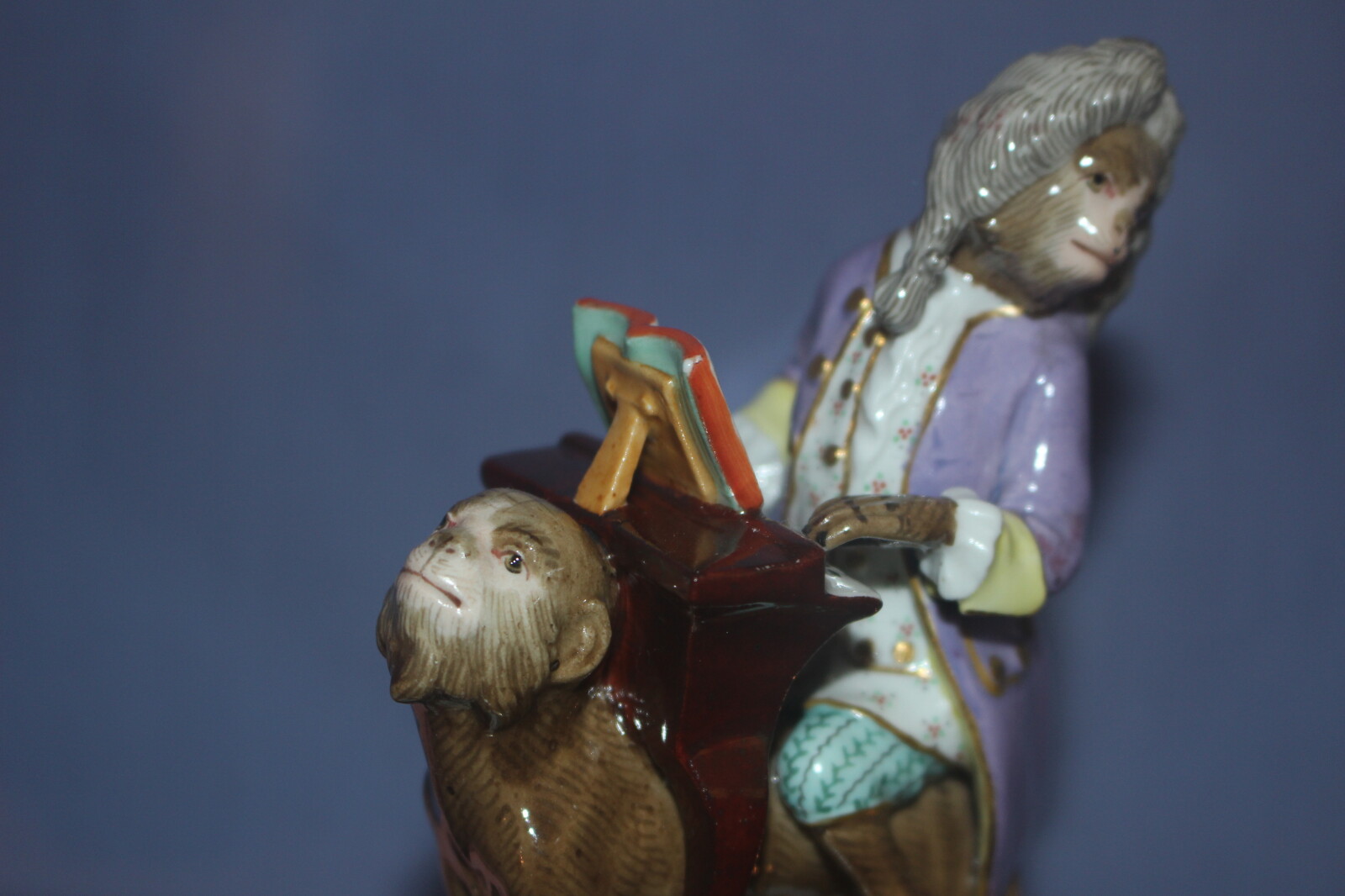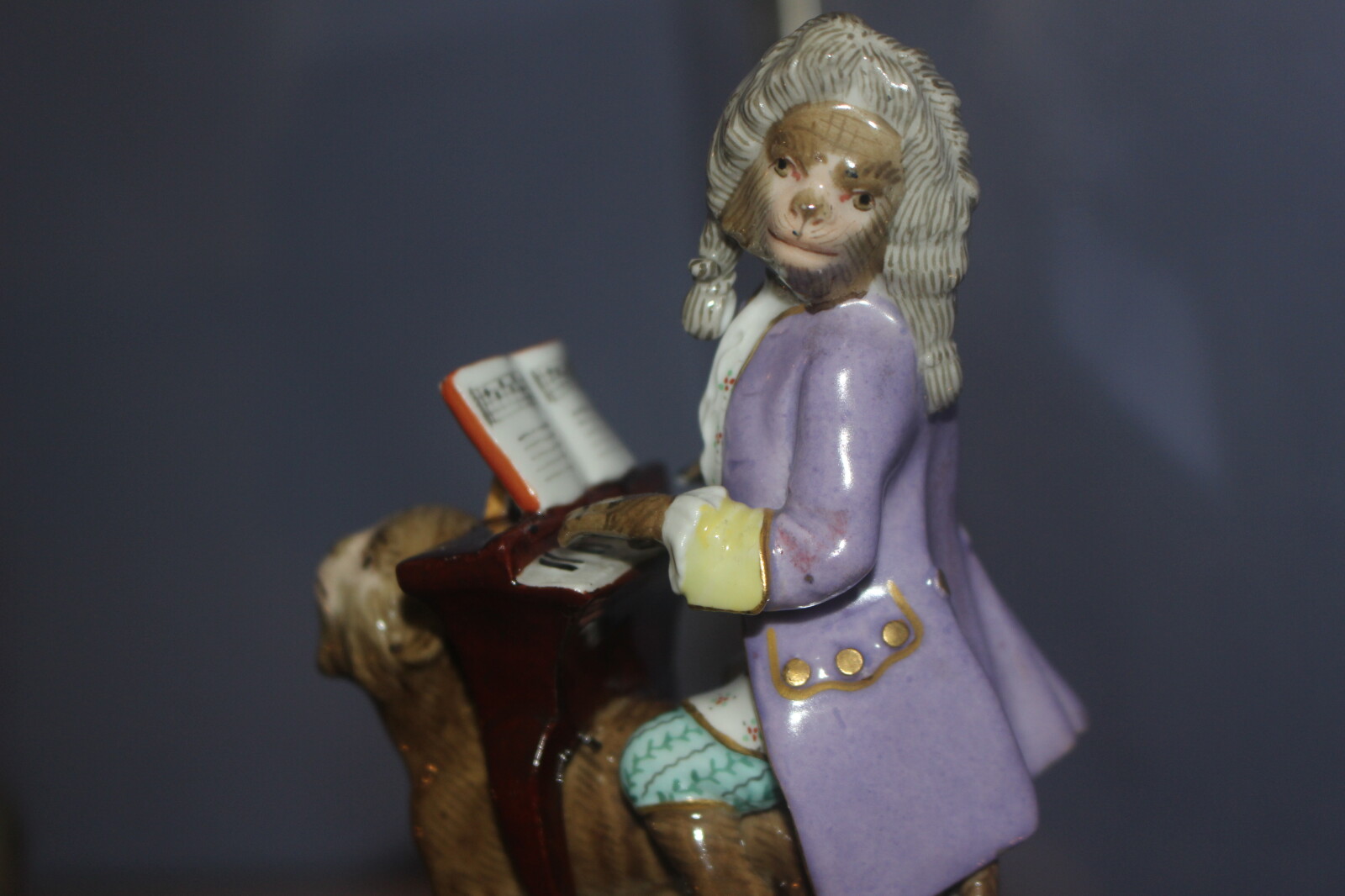Is that a monkey playing the piano?: The Clore Discovery Gallery’s cabinet of curious ceramic animals and the importance of sensory interpretation – Part Two
, 17 Ionawr 2019
In the last post I wrote about some of the fascinating objects held in the display case in the Clore Discovery Centre at National Museum Cardiff. Today I’m going to focus on another object with a rich history.
One of the most popular objects in the display is the curious nineteenth-century Meissen figurine Monkey Orchestra Pianist, produced in paste porcelain and painted in enamels. A visual inspection of this monkey reveals he is costumed as a courtier. He is caught in the moment of looking over his shoulder at the viewer, sitting on another monkey while playing the harpsicord. Even as a nineteenth-century reproduction, Monkey Orchestra Pianist delightfully captures movement as if in suspended animation that can thrill the viewer.
Close scrutiny of Monkey Orchestra Pianist can help to get a sense of the period in which the original version of this ceramic was produced. It is a reproduction of the hard-paste Meissen porcelain Figure Group of Two Monkeys, produced in 1753 by the German Meissen modeller Johann Joachim Käendler (1706-1775).
During the eighteenth century, porcelain was one of the most prized materials in the world. Developed in China around 2,000 years ago, by the early years of the eighteenth century trade in porcelain wares to Europe was thriving. However, the method for making porcelain remained a secret to Europeans until the German alchemist Johann Friedrich Böttger (1682-1719) discovered its formula. As a result, the King of Poland, Augustus the Strong (1670-18), established the Meissen factory in 1710 to produce decorative wares. Meissen porcelain figures could be satirical, mythological or allegorical, and were designed to convey information about their owners – a level of intellect perhaps or even their sense of humour.
Observing the absurd facial expression, posture, actions and brilliantly coloured frills of Monkey Orchestra Pianist’s sitting monkey also conveys clues as to the more entertaining aspect of eighteenth-century life and its desire to consume visual spectacles of every sort. Indeed, the Figure Group of Two Monkeys (of which Monkey Orchestra Pianist is a replica) belongs to Käendler’s fantastical ‘Monkey Orchestra’ or ‘Affenkapelle des Grafen Brühl – The Monkey Orchestra’, created in 1753. This band consists of 21 monkey musicians, the male figures depicted as musicians, the female ones as singers, thus wittily holding up a mirror to courtly society.
Apparently, Augustus the Strong commissioned these decorative caricatures after a guest at one his banquets said that his orchestra played like performing monkeys! Monkey Orchestra Pianist’s dressy green trousers, purple jacket and long wig is suggestive of the fact Käendler took inspiration from the drawings made by the French artist Christophe Huet (1700-1759). In the 1700s, a taste in France for depictions of monkeys mimicking human activities led to the development of a genre known as ‘singerie’ – from the French word ‘singe’ (monkey). Huet published the Livre de Singeries (Book of Monkeys) and was responsible for the mural decoration of the Singerie Rooms at the Château de Chantilly in the 1730s. In his paintings for the Singerie Rooms, Huet’s costumed monkeys act as ‘surrogates’ for the chateau’s residents, shown singing, dancing and even sledding.
Again, these objects are just a small fraction of National Museum Cardiff’s wonderful collection of ceramics to look out for, so please come and explore!



